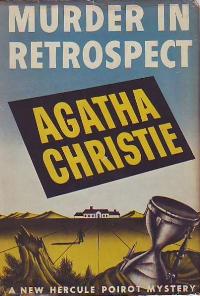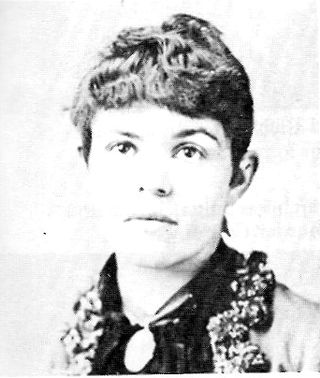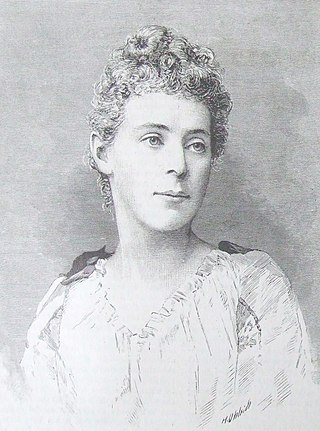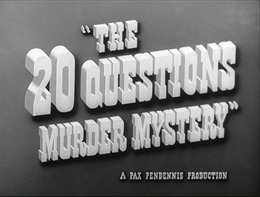
George Joseph Smith was an English serial killer and bigamist who was convicted and subsequently hanged for the murders of three women in 1915. The case became known as the Brides in the Bath Murders. As well as being widely reported in the media, it was significant in the history of forensic pathology and detection. It was also one of the first cases in which striking similarities between connected crimes were used to prove guilt, a technique used in subsequent prosecutions.

Five Little Pigs is a work of detective fiction by British writer Agatha Christie, first published in the US by Dodd, Mead and Company in May 1942 under the title Murder in Retrospect and in the UK by the Collins Crime Club in January 1943. The UK first edition carries a copyright date of 1942 and retailed at eight shillings while the US edition was priced at $2.00.

Edith Jessie Thompson and Frederick Edward Francis Bywaters were a British couple executed for the murder of Thompson's husband Percy. Their case became a cause célèbre.

Thomas Neill Cream, also known as the Lambeth Poisoner, was a Scottish-Canadian medical doctor and serial killer who poisoned his victims with strychnine. Cream murdered up to ten people in three countries, targeting mostly lower-class women, sex workers and pregnant women seeking abortions. He was convicted and sentenced to death, and was hanged on 15 November 1892.

The Pimlico Mystery or the Pimlico Poisoning Mystery is the name given to the circumstances surrounding the 1886 death of Thomas Edwin Bartlett, possibly at the hands of his wife, Adelaide Blanche Bartlett, in the Pimlico district of London.

Daisy Louisa C. de Melker, simply known as Daisy de Melker, was a South African nurse who was accused of poisoning two husbands with strychnine for their life insurance money; all she was found guilty of, however, was poisoning her only son with arsenic for reasons which are still unclear. De Melker is the second woman to have been hanged in South African criminal history.

Florence Elizabeth Chandler Maybrick was an American woman convicted in the United Kingdom of murdering her husband, cotton merchant James Maybrick.
The Gorilla is a three-act play written by Ralph Spence. Donald Gallaher produced it on Broadway, where it opened at the Selwyn Theatre on April 28, 1925. The play was a success and ran on Broadway for 257 performances. A production opened in London at the New Oxford Theatre on June 30, 1925, and ran for 134 performances. The play was a parody of popular theatrical mysteries such as The Bat and The Cat and the Canary. Its advertisements claimed it "outbats The Bat".
Philip Cross from Shandy Hall, Dripsey, County Cork, Ireland, was a physician convicted and hanged for the murder of his wife after an affair with his children's governess. The case was known in the late 19th century as "the Coachford Poisoning Case" as the house was on the road between the adjacent villages of Dripsey and Coachford.

The Unguarded Hour is a 1936 American drama film directed by Sam Wood and starring Loretta Young, Franchot Tone and Roland Young. In England, a prominent young prosecutor in a murder trial is unaware that his wife is involved.
Catherine Wilson was a British murderer who was hanged for one murder, but was generally thought at the time to have committed six others. She worked as a nurse and poisoned her victims after encouraging them to leave their money to her in their wills. She was described privately by the sentencing judge as "the greatest criminal that ever lived".

Le Crime ne paie pas is a 1962 French drama portmanteau film directed and partly written by Gérard Oury. It consists of four separate episodes, each with its own cast and writers but sharing common themes of beautiful women, jealousy, revenge and death.

Sophie Charlotte Elisabeth Ursinus was a German serial killer believed to have been responsible for poisoning her husband, aunt, and lover, and of attempting to poison her servant. Her trial led to a method of identifying arsenic poisoning.

The Twenty Questions Murder Mystery, also known as Murder on the Air, is a 1950 British second feature comedy crime film directed by Paul L. Stein and starring Robert Beatty, Rona Anderson, and Clifford Evans. The screenplay was by Victor Katona and Patrick Kirwan. The film is a hybrid: the Twenty Questions sections take place in a studio recording of the BBC radio programme with the regular panellists and presenter. This is threaded into the plot as the clues trigger a series of murders, each linked to the clue.
The Man Who Changed His Name is a mystery play by the British writer Edgar Wallace, which was first staged in 1928. A young woman begins to suspect that her wealthy, respectable husband may be an escaped Canadian murderer.

The Lady of Ascot is a 1930 crime novel by the British writer Edgar Wallace. It is a loose novelisation of Wallace's 1921 play M'Lady about a woman attempting to raise her daughter in high society whose plans are threatened by the return of her husband who has been serving a sentence at Broadmoor for the murder of a police officer.

Louisa May Merrifield was a British murderer and the third-last woman to be hanged in the United Kingdom. She was executed by Albert Pierrepoint at Strangeways Prison in Manchester for poisoning her elderly employer. She was notorious at the time as 'The Blackpool Poisoner'.

The Eye in the Museum is a 1929 detective novel by the British author Alfred Walter Stewart, published under his pseudonym J.J. Connington. It was the first of two books featuring Superintendent Ross, a brief attempt by the author to replace his best-known character Chief Constable Sir Clinton Driffield. Ross is similar in type to the contemporary Inspector French created by Freeman Wills Crofts. The title is a play on words referring both to a glass eye that is a prominent part of the museum's collection and a camera obscura on the top of the building which provides a vital evidence allowing Ross to solve the case.

What Really Happened is a 1926 crime novel by the British author Marie Belloc Lowndes. It was published in London by Hutchinson and in New York by Doubleday. In 1936 she adapted the novel into a stage play of the same title. Lowndes based the story on the Bravo Murder Case, shifting the setting from the 1870s to the present day.

The Terriford Mystery is a 1924 mystery crime novel by the British author Marie Belloc Lowndes. It was one of several of her novels which depict a courtroom trial for murder.
















